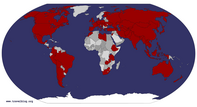Advertisement
Published: February 19th 2018

berlin wall2.jpg202 KBSent by mail Save to OneDrive - Personal Saved to OneDrive - Personal Cancel Download Pending... 202 KB

berlin wall3.jpg190 KBSent by mail Save to OneDrive - Personal Saved to OneDrive - Personal Cancel Download Pending... 190 KB

berlin wall4.jpg80 KBSent by mail Save to OneDrive - Personal Saved to OneDrive - Personal Cancel Download Pending... 80 KB

berlin wall1.jpg95 KBSent by mail Save to OneDrive - Personal Saved to OneDrive - Personal Cancel Download Pending... 95 KB

berlin wall2.jpg202 KBSent by mail Save to OneDrive - Personal Saved to OneDrive - Personal Cancel Download Pending... 202 KB

berlin wall3.jpg190 KBSent by mail Save to OneDrive - Personal Saved to OneDrive - Personal Cancel Download Pending... 190 KB

berlin wall4.jpg80 KBSent by mail Save to OneDrive - Personal Saved to OneDrive - Personal Cancel Download Pending... 80 KB <button class="_ay_h ms-font-weight-semilight ms-font-s ms-font-color-neutralSecondary o365button"
type="button" disabled="disabled">4 attachments (567 KB) Download all Save all to OneDrive - Personal
Though most of the Berlin Wall was torn down in 1989, some portions remained as a memorial to the Cold War. But an amateur historian has discovered a 262 foot (80 meters) section of intact wall in an isolated suburban area of Berlin. The surviving stretch of wall is still outfitted with Y-shaped metal joints, through which barbed wire was threaded to prevent digging through. Also visible are metal posts which held electric wires and trip wires, also meant to deter the potential escapee.
Why is this of interest to me? Because I went through the Berlin Wall twice in 1971, during the apex of the Cold War. And I went back in 2016 hoping to revisit that strange, frightening, and sobering experience. It was a big disappointment, since the Wall is gone, and boutique stores line the street that once housed the STASI and their considerable weaponry.
Germany,
post WW2, was divided into four zones. The Soviets held the eastern side, and the U.S., France, and England held the western half. Furthermore, Berlin was also split among the Allies in a similar manner. By August of 1961, the Soviet bloc and East Germany's Communist bloc were weary of so many residents leaving the eastern sector. So, on August 13, 1961, Berliners woke up to a city divided by a wall of barbed wire, later reinforced with concrete.
Eventually, it was replaced with a thick wall of concrete, lined with a "Death Strip", a wide stretch of sand, guarded around the clock by East German soldiers. They were assisted by attack dogs, and trip wire machine guns. Of course, the East Germans proclaimed the wall was designed to keep "fascists" from getting
into East Berlin.
This newly discovered section appears to be made from the remains of bombed out buildings from WW2. The gaps between the buildings were filled in and the cellars blown up so residents could not tunnel out. When the Communists arrived later, they reinforced the wall. Much like remaining sections of the wall, graffiti seems to be the primary
focus. When the wall came tumbling down, this section was forgotten.
Pieces of the old Wall can be found here in the U.S. Two of them are at 1) the Main Street Station Hotel and Casino in downtown Vegas, in the men's room, and 2) the Newseum in Washington, DC.
My trip through the wall remains one of the most memorable experiences of my life. How would you feel if one of your travel companions, a cute, hippie girl was strip-searched? And machine guns followed your every step across Checkpoint Charlie?
Advertisement
Tot: 0.073s; Tpl: 0.012s; cc: 9; qc: 26; dbt: 0.0388s; 1; m:domysql w:travelblog (10.17.0.13); sld: 1;
; mem: 1.1mb












